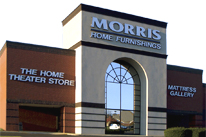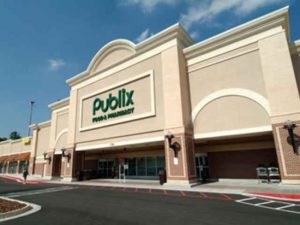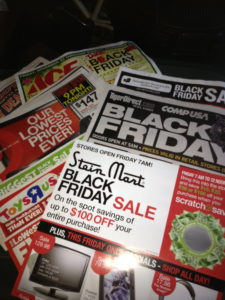BUILDING YOUR BRAND WITH SOCIAL MEDIA
PRESS PLAY >> TO VIEW KEN MESSAGE FOR JANUARY.
This year’s annual National Retail Federation convention exhibited more energy and optimism from the attendees (over 27,000 of them) than I have seen over the past several years. The Expo was packed into three halls with high tech tools that would help just about any retail establishment operate more effectively. The sessions provided passion and excitement for the future and stressed the importance of retail to the global economy. And talk of social media and mobile marketing was everywhere you went. Indeed, it’s time to recognize that these cutting edge marketing tools have come of age and should be thought of as requisites for any sound branding and promotional plan for today’s retailers.
 For example, take the case of Morris Home Furnishings from Dayton, Ohio. VP Marketing Robert Klaben provided some interesting examples of how his company was using social media to increase sales to the audience at the Main Street Session that was targeted to independent retailers. Kleben not only showed how Morris used Facebook (and other tools) to interact with their customers on an ongoing basis, but he showed how this has become one of the best measurement tools for evaluating the response to many of their promotions and loyalty building efforts. Sure, they were generating increased traffic and sales, but they have also been able to create loyalty that can be measured by the interactive responses and feedback that their customers are eagerly providing. These are not simply sales promotions, but brand building programs that are building relationships that will bring the customers back to their stores many times in the future. Granted the furniture business is not a frequent store visit experience, so you need to build an ongoing communication with your customers to be the first place they think about when the need for furniture arises. Their experiences show that the dialogue is building fast and the relationships are built on the heart not just the wallet.
For example, take the case of Morris Home Furnishings from Dayton, Ohio. VP Marketing Robert Klaben provided some interesting examples of how his company was using social media to increase sales to the audience at the Main Street Session that was targeted to independent retailers. Kleben not only showed how Morris used Facebook (and other tools) to interact with their customers on an ongoing basis, but he showed how this has become one of the best measurement tools for evaluating the response to many of their promotions and loyalty building efforts. Sure, they were generating increased traffic and sales, but they have also been able to create loyalty that can be measured by the interactive responses and feedback that their customers are eagerly providing. These are not simply sales promotions, but brand building programs that are building relationships that will bring the customers back to their stores many times in the future. Granted the furniture business is not a frequent store visit experience, so you need to build an ongoing communication with your customers to be the first place they think about when the need for furniture arises. Their experiences show that the dialogue is building fast and the relationships are built on the heart not just the wallet.
 It’s time for more retailers to take the same approach as Morris. It’s now expected that a retailer will have a robust website that will provide them not only a chance to get product information but also help them complete the transaction. This simply gets you into the ballpark. However, to build a strong brand relationship, social and mobile marketing can certainly accelerate the process. Remember, convenience is more important than ever and the online media help make it easier than ever before to shop and make an intelligent purchase without ever having to go to another mall. Facebook has gone far beyond being a place to share your personal experiences. It is the forum for letting retailers know what you like and how you want your purchase experience.
It’s time for more retailers to take the same approach as Morris. It’s now expected that a retailer will have a robust website that will provide them not only a chance to get product information but also help them complete the transaction. This simply gets you into the ballpark. However, to build a strong brand relationship, social and mobile marketing can certainly accelerate the process. Remember, convenience is more important than ever and the online media help make it easier than ever before to shop and make an intelligent purchase without ever having to go to another mall. Facebook has gone far beyond being a place to share your personal experiences. It is the forum for letting retailers know what you like and how you want your purchase experience.
Forums like shop.org’s annual conference and the CRMC in Chicago are growing each year because of the interest by retailers in learning more about how to use these media. And the conferences are loaded with great information about how to use them to not only increase your business but also improve your brand. It’s time to stop thinking of these as separate tactics and to include them in the strategy development for any successful marketing and branding plan.

 Shortly, after viewing the spot, I read the news that former Publix president and chief marketer had passed away in Lakeland, FL. In case you haven’t hear of Mark before, suffice it to say that he was more instrumental than anyone in making Publix a retail powerhouse in the southeast helping to build Publix sales from $3.2 Billion when he took over the top position to $27 Billion in just over 1000 stores in only five states. We won’t even talk about the dominant market share that Publix has built and the loyalty it has developed with its customers over the years. More significantly, however, is how Mark’s vision made Publix a brand that is part of the markets that its stores dominate. There are many factors that contribute to this strong position—well-run, well-merchandised stores in prime locations, loyal employees who love to work in a grocery store (although they don’t think of it in those terms), constant improvement in layout and design to really make “shopping a pleasure” (Publix’s long established slogan), and finally, to break-through creativity in their marketing that not only built a memorable brand, but also fought off the price competition so prevalent in this category of retail.
Shortly, after viewing the spot, I read the news that former Publix president and chief marketer had passed away in Lakeland, FL. In case you haven’t hear of Mark before, suffice it to say that he was more instrumental than anyone in making Publix a retail powerhouse in the southeast helping to build Publix sales from $3.2 Billion when he took over the top position to $27 Billion in just over 1000 stores in only five states. We won’t even talk about the dominant market share that Publix has built and the loyalty it has developed with its customers over the years. More significantly, however, is how Mark’s vision made Publix a brand that is part of the markets that its stores dominate. There are many factors that contribute to this strong position—well-run, well-merchandised stores in prime locations, loyal employees who love to work in a grocery store (although they don’t think of it in those terms), constant improvement in layout and design to really make “shopping a pleasure” (Publix’s long established slogan), and finally, to break-through creativity in their marketing that not only built a memorable brand, but also fought off the price competition so prevalent in this category of retail. That brings me to Black Friday! Once again this year, retailers have abandoned any semblance of building a brand prior to the holidays in favor of the biggest sale of the year (or so they say). Even the name—formerly a trade description for the sales and profit potential of the day after Thanksgiving—is nothing more than a big clearance type of event. And it’s not just the retail stores. Black Friday is a good time to buy a car, clean your carpets, get your teeth whitened and just about any other business that is trying to get more customers at this time of year. Don’t have anything more to say about Black Friday? Just open the store even earlier…like Thanksgiving am or maybe even Wednesday pm. As a student of retail marketing, I admit that I went through every circular in the Thursday paper and didn’t find one that really stood out. Kohl’s and JCP outweighed the others but the messages were lost in the Black Friday shouting and screaming. Kind of like driving down the Grand Strand at Myrtle Beach or A1A in Daytona. Ycccch! The broadcast was equally boring, although Target dared to be different with some silly carolers that turned me off after the 6th time of seeing the spots (in one night). It’s time to give customers a reason to shop and then have a sale that means something other than a day of the week.
That brings me to Black Friday! Once again this year, retailers have abandoned any semblance of building a brand prior to the holidays in favor of the biggest sale of the year (or so they say). Even the name—formerly a trade description for the sales and profit potential of the day after Thanksgiving—is nothing more than a big clearance type of event. And it’s not just the retail stores. Black Friday is a good time to buy a car, clean your carpets, get your teeth whitened and just about any other business that is trying to get more customers at this time of year. Don’t have anything more to say about Black Friday? Just open the store even earlier…like Thanksgiving am or maybe even Wednesday pm. As a student of retail marketing, I admit that I went through every circular in the Thursday paper and didn’t find one that really stood out. Kohl’s and JCP outweighed the others but the messages were lost in the Black Friday shouting and screaming. Kind of like driving down the Grand Strand at Myrtle Beach or A1A in Daytona. Ycccch! The broadcast was equally boring, although Target dared to be different with some silly carolers that turned me off after the 6th time of seeing the spots (in one night). It’s time to give customers a reason to shop and then have a sale that means something other than a day of the week. With the political campaigns at full speed, I’m reminded of a famous quote from the 1964 Republican candidate
With the political campaigns at full speed, I’m reminded of a famous quote from the 1964 Republican candidate  Barry Goldwater who defended his views when he said “Extremism in the pursuit of liberty is no vice.” Although I couldn’t vote then, I do remember that the voters rejected his extreme right views and with the exception of Goldwater’s home state and the Deep South, he was soundly rejected in favor of Lyndon Johnson. The pendulum would swing too far right and they would not accept that much change.
Barry Goldwater who defended his views when he said “Extremism in the pursuit of liberty is no vice.” Although I couldn’t vote then, I do remember that the voters rejected his extreme right views and with the exception of Goldwater’s home state and the Deep South, he was soundly rejected in favor of Lyndon Johnson. The pendulum would swing too far right and they would not accept that much change.
Recent Comments